- Home
- Joyce Carol Oates
On Boxing Page 10
On Boxing Read online
Page 10
It should not be assumed, on the evidence of the above, that Mike Tyson is not intelligent; or that he is intellectually limited. On the contrary, I sensed in him the prodigy’s instinctive husbanding of the self: he dares not allow his imagination freedom in areas only peripheral to the cultivation of his talent. Because he is an unusually sensitive person—sensitive to others’ feelings, not merely to his own—he does not want to be forced to expend himself in feeling, or in thinking; except of course on his own terms. The awareness of life’s tragic ambiguity that serious art provides—the perception, as Henry James describes it in the preface to What Maisie Knew, that no themes are so human “as those that reflect for us, out of the confusion of life, the close connection of bliss and bale, of the things that help with the things that hurt, so dangling before us for ever that bright hard medal, of so strange an alloy, one face of which is somebody’s right and ease and the other somebody’s pain and wrong”—would be disastrous for the warrior boxer. When, the story goes, Alexis Arguello (the great champion of the featherweight, junior lightweight, and lightweight divisions) met Roberto Durán (the great champion of the lightweight and welterweight divisions) and proffered his hand to shake, Durán backed away and screamed, “Get away! You’re crazy! I’m not your friend!” To acknowledge friendship, let alone brotherhood, always makes it difficult to kill—or to provide for spectators the extraordinary mimicry of killing that boxing of the quality of Mike Tyson’s involves. Life is real and painful, and steeped in ambiguity; in the boxing ring there is either/or. Either you win, or you lose.
The brilliant boxer is an artist, albeit in an art not readily comprehensible, or palatable, to most observers. The instruments of his art are his own and his opponent’s bodies. That it is, in a sense, a contemplative art—contemplated, dreamt-of, for weeks, months, even years before it is executed—is a proposition important to understand if one is to understand the boxer. (“It’s a lonely sport,” Mike Tyson, who is surrounded by people who love him, says.) Obsession is not greatness but greatness is obsession, so it is no accident that, in his ambition to be not only the youngest titleholder in heavyweight history but (I would guess) the greatest titleholder of all time, Tyson is always, in a spiritual sense, in training. His admiration for past boxers—Stanley Ketchel, Jack Dempsey, Henry Armstrong, Kid Chocolate—and, not least, Roberto Durán, of whom he speaks with genuine awe—is the admiration of the shrewd apprentice for his elders, not necessarily his betters. When I ask Tyson to assess his heavyweight contemporaries, men he will be meeting in the ring in the next few years, he again becomes purposefully vague, saying he doesn’t think too much about them: “That would drive me crazy.” Pinklon Thomas, Gerry Cooney, Carl Williams, Tyrell Biggs, Bert Cooper—he’d rather change the subject. And this instinct too is correct: the boxer must concentrate upon his opponents one by one, each in turn: in the collective, they cannot be granted existence. I am reminded of a diary entry of Virginia Woolf’s to the effect that she does not dare read her serious rivals. “Do I instinctively keep my mind from analysing, which would impair its creativeness?…No creative writer can swallow another contemporary. The reception of living work is too coarse and partial if you’re doing the same thing yourself” (20 April 1935).
Similarly, Tyson does not want to think overmuch about fatal accidents in the ring. He takes it for granted that he will not, indeed cannot, be hurt—“I’m too good for that to happen”; on the subject of an opponent’s fate at his hands he is matter-of-fact and pragmatic. He is a boxer, he does his job—throwing punches until his opponent is defeated. If, as in the infamous Griffith-Paret match of 1962, in which Paret, trapped in the ropes, was struck eighteen unanswered blows by Griffith, death does occur, that is no one’s fault: it can be said to be an accident. “Each of you takes the same chance, getting into the ring,” Tyson says in his soft, considered, alternately slow and hurried voice—one of the voices, perhaps, of Cus D’Amato. “That you might die. It might happen.”
I ask Tyson what he was thinking when the stricken Berbick tried to get to his feet and he says quickly, “I hoped he wasn’t hurt,” and adds, “It was a deliberate punch, to the head—a bad intention in a vital area.” The anatomical areas Tyson has been taught to strike with his sledgehammer blows include the liver, the kidneys, the heart, and, as in Berbick’s case, a certain spot on the temple which, if struck hard enough, will cause a man to drop immediately to the canvas. He will be fully conscious, as Berbick was, but paralyzed. Helpless. Down for the count.
And Tyson is confident that he himself cannot be hurt—in any serious, permanent way?
“That’s right. I can’t be. I’m too good.”
Following the accidental death of one of the Flying Wallendas some years ago, a surviving member of the family of famous aerial-trapeze performers told the press that none of them had any intention of quitting. “All of life,” he said, “is just getting through the time between acts.”
So too with the fighter who loves to fight; the man whose identity is so closely bound up with the ring that it might be said he has none, publicly speaking, outside it. His creative work is done only in the ring, and only at certain designated times. Taped, it becomes permanent; it is himself—or all that posterity will know of him.
The extraordinary upward trajectory of Mike Tyson’s career—twenty-eight professional fights in eighteen months—has been the result of discipline and concentration so fierce as to resemble monastic devotion. Now that he is a titleholder, and a celebrity, and no longer a hungry young contender, Tyson’s sense of himself has irrevocably altered; though he has yet to unify the heavyweight title—to do so, he will have to beat “Bonecrusher” Smith for the WBA title and the elusive Michael Spinks for the IBF title—he is already being called, and, in excited moments, calls himself, the heavyweight champion of the world. He has outdistanced his contemporaries—the new young generation of boxers that includes such Olympic Gold Medalists as Tyrell Biggs, Mark Breland, Paul Gonzales, Meldrick Taylor, and Pernell Whittaker; he is the first among them to win not only a title but enormous popular success. “When I was a kid I wanted to be famous—I wanted to be somebody,” Mike Tyson says. And: “If someone right now is going to be famous, I’m glad it’s me.” But fame and the rewards of fame are, in a very real sense, the counterworld of the boxer’s training: they represent all that must be repressed in the service of the boxer’s real, as opposed to his merely public, career. When boxers retire it is primarily because of the terrible rigors of training, not the risks of defeat, injury, or even death in the ring. (The boxer who is generally credited with having trained hardest is Rocky Marciano, who commonly spent upward of two months preparing for a fight. And when Marciano decided to retire, undefeated, at the age of thirty-three, it was because the sacrifices of the training camp outweighed the rewards of celebrity: “No kind of money can make me fight again,” Marciano said.) The existential experience of the fight itself—spectacular, amplified, recorded in its every minute detail—is not only the culmination of the formidable training period but, in its very flowering, or fruition, it presents the boxer-as-performer to the world. Very likely this physical expenditure of the self (Tyson typically refers to it as “matching my boxing skills against my opponent’s”), this bedrock of what’s real, casts the remainder of life into a light difficult to assess. Life outside the ring is real enough—yet is it really real? Not public display as such but the joy of the body in its straining to the very limits of ingenuity and endurance underlies the motive for such feats of physical prowess as championship boxing or aerial-trapeze work. The performer is rewarded by his performance as an end in itself; he becomes addicted, as who would not, to his very adrenaline. All of life is just getting through the time between acts.
Since Mike Tyson is a young man gifted with a highly refined sense of irony, if not a sense of the absurd, it cannot have escaped his attention that, much of the time, in public places like the expensive midtown restaurant in which our party has dinn
er following the interview, or the reception two weeks later in a private suite in Madison Square Garden before the Witherspoon-Smith elimination match, he is likely to be the only black in attendance. He is likely to be the youngest person in attendance, and the only man not dressed in a suit and tie. Above all he is likely to be the only person with a gold tooth and a homemade tattoo (“Mike” on his right bicep); and the only person who, not many years before, was so violent and uncontrollable (“I went berserk sometimes”) he had to be forcibly restrained. But when I mention some of this to a fellow guest at the Garden reception the man looks at me as if I have said something not only bizarre but distasteful. “I doubt that Mike thinks in those terms,” he says. Not even that Tyson is the only black in this gathering of well-to-do white people, an observation that would appear to be simple fact? But no, I am assured: “Mike Tyson doesn’t think in those terms.”
Following a brief speech by the gentleman who runs Madison Square Garden, Tyson is presented with a ceremonial gift: a glass paperweight apple symbolizing New York City. He is photographed, he smiles genially, expresses his thanks for the paperweight, stands looking at it, for a moment, with a bemused expression. When, afterward, I ask Tyson how he likes being a celebrity—since, after all, he wanted to be famous—he says, “It’s okay.” Then: “Most of the time these things drive me crazy.” I observe that he has learned to smile very nicely for photographers, and he responds with a violent parody of a celebrity smile: a death’s-head grimace that is fierce, funny, self-mocking, inspired.
Four weeks later, still being photographed—this time by photographers for two magazines simultaneously—Tyson is back in training in Catskill, New York, in a third-floor walk-up gym above Catskill Police Headquarters on main Street. The gym is small, well-weathered, romantically shabby; owned and operated by the city of Catskill but leased for $1 a year to the Cus D’Amato Memorial Boxing Club, a nonprofit organization. In the spareness of the gym’s equipment as in the sentiment that so clearly accrues to its homeliest features, it is the very antithesis of today’s high-tech high-gloss athletic clubs. It contains only a single ring and a few punching bags; its ceiling is high and blistered, its lights antiquated. Its peeling walls are covered with newspaper clippings, announcements of the Catskill Boxing Club, photographs and posters of great champions (Louis, Walcott, Charles, Marciano, Patterson, et al.), reproductions of magazine covers. Mike Tyson’s entire career is recorded here, in miniature, and, beneath the legend WE MOURN HIS PASSING, there are numerous clippings and photographs pertaining to the late Cus D’Amato, who once presided over the Boxing Club. Tyson prefers this gym to any other, naturally: it was here he began training, aged thirteen, and here that D’Amato’s spirit still resounds. The gym is as indelibly imprinted in Tyson’s imagination as any place on earth, and one must suppose that his prodigious youthful success has consecrated it in turn.
No athletes train more rigorously than boxers, and no present-day boxer is more serious about his training than Mike Tyson. Indeed, for the first eighteen months of his career he seems to have kept in condition more or less as the legendary Harry Greb did—by fighting virtually all the time. Today Tyson has done his morning roadwork—“three to five miles; I like it then ’cause I’m alone”—and is now going through the exercises that constitute “preliminary” training. (In Las Vegas he will work with at least five sparring partners. As Jim Jacobs explains, the sparring partners need time to recover.) Dressed in a black leotard and blowsy white trunks he moves from “work” station to station, closely attended by his trainer, Rooney, whom he clearly respects, and for whom he feels a good deal of affection, perhaps, at least in part, because Rooney is himself a D’Amato protégé—a welterweight who once boxed on the U.S. Boxing Team—and even shared one or two cards with Tyson, when he was already Tyson’s trainer.
The drills are fierce and demand more concentration, strength, and sheer physical endurance than any fight Tyson has yet fought. Rooney has set a timer made up of two bulbs, red and green, to monitor each drill, the red telling Tyson to pause, the latter to resume. First he jumps rope, as if in a kind of trance, the rope moving too swiftly to be seen; the spectacle of a man of Tyson’s build, so light on his feet, so seemingly weightless, has a preternatural quality. Next the heavy bag: Rooney wraps his hands with white tape, Tyson puts on gloves, pushes the bag with his left, then pummels it with combinations as it swings back to him. Rooney stands close and after each flurry the two confer, even as the heavy bag still swings treacherously in and around them. As he launches his hooks Tyson leaps from point to laterial point with extraordinary agility—as if his upper body remains stationary while his lower body moves in sharp angles out of which solidly anchored punches are shot. These are blows of such daunting power it is difficult to comprehend how they could be absorbed by any human being…any fellow creature of flesh, bone, and blood.
Rooney is game to try, at least for a while, wearing padded mitts over his hands and forearms; then they move on to the “slip” bag, where Tyson bobs and weaves, eluding his invisible opponent’s best-aimed blows to the head. Last, the speed bag. In the blurred and confusing action of a fight it is not so readily clear, as it is in the gym, that Tyson’s relative shortness (he is considered a “little” heavyweight) is really to his advantage. Most of his opponents are taller than he, if not invariably heavier, so that they are obliged to punch at a downward angle, utilizing only their shoulder and arm muscles; while Tyson can punch upward, utilizing not only his shoulder and arm muscles but his leg muscles as well—and these muscles are massive. By crouching, he can make himself shorter, and yet more elusive. (As Jim Jacobs has explained, “People speak of a ‘height advantage’ when what they’re really referring to is a ‘height disadvantage.’ If a boxer is good, and shorter than his opponent, the advantage is his, and not his opponent’s. The same thing holds true with the fallacy of the ‘reach advantage’—a boxer has a ‘reach advantage’ only if he is superior to his opponent.”) But the strangest, most dazzling thing about Tyson’s boxing style is really his speed: his incredible speed. How, one wonders, can he do it? Weighing what he does, and built as he is? And will he be able to keep it up, in the years to come?
“Eat, sleep, and train,” says Kevin Rooney. “Mike loves to train.”
But: “I’m tired,” Tyson says several times, in a soft, nearly inaudible voice. (He is still being photographed.) In his black leotard, towel in hand, he is literally drenched in sweat; exuding sweat like tears. One can see how much easier fighting has been for him than the regimen Rooney has devised—so many of Tyson’s fights have lasted less than five minutes, against opponents lacking the skill to so much as raise a welt on his face, or cause him to breathe hard. And this training session is only the beginning—on February 3 he leaves for Las Vegas and four weeks of “intensive” training.
He showers, dresses, reappears in jeans, a white tuniclike jacket, stylish tweed cap, brilliantly white Gucci sports shoes—surely the only shoes of their kind in Catskill, New York? When we’re photographed together in the corner of the ring he complains in my ear of the hours he has endured that day alone, facing cameras: “You can’t believe it! On and on!” Fame’s best-kept secret—its soul-numbing boredom—has begun to impress itself upon Mike Tyson.
Catskill, New York, is a small town of less than six thousand inhabitants. Its well-kept wood-frame houses have that prewar American look so immediately appealing to some of us—the very architecture of nostalgia. Like Main Street, with its Newberry’s Five-and-Dime, Joe’s Food Market, Purina Chows, the Town of Catskill town hall a storefront facing the police station, and the village offices—clerk, treasurer, tax collector—in the same building as the Catskill Boxing Club. Parking here is five cents an hour.
Mike Tyson lives two or three miles away, in one of the largest and most attractive houses in town, the home of Mrs. Camille Ewald, Cus D’Amato’s sister-in-law. The house is at the end of an unpaved, seemingly private road, immaculately kept o
utside and in, yet comfortable—“I’ve lived here for seven years now,” Tyson says proudly. He leads me through a kitchen and through a parlor room gleaming with trophies he doesn’t acknowledge and we sit at one end of an immense living room while, from varying distances, a photographer (from Japan) continues to take candid shots of him he doesn’t acknowledge either.
Life in Catskill is quiet and nourishingly routine: up at 6 A.M., to bed at 9 P.M. Daily workouts at the gym with Rooney; a diet of meat, vegetables, pasta, fruit juice—never any alcohol or caffeine; a modicum, in this semirural environment, of monastic calm. But there are numerous distractions: last week Tyson addressed a junior high school in New York City, under the auspices of the Drug Enforcement Agency, and tomorrow he is due to fly to Jamaica for a boxing banquet at which, however improbably, Don King is going to be given a humanitarian award—“But I’m not going; I’m too tired.” He speaks soberly of the responsibility of celebrity; the fact that fame requires, of its conscientious recipients, a degree of civic servitude. The awareness weighs upon him almost visibly.

 Starr Bright Will Be With You Soon
Starr Bright Will Be With You Soon My Heart Laid Bare
My Heart Laid Bare A Fair Maiden
A Fair Maiden The Doll-Master and Other Tales of Terror
The Doll-Master and Other Tales of Terror Wild Nights!: Stories About the Last Days of Poe, Dickinson, Twain, James, and Hemingway
Wild Nights!: Stories About the Last Days of Poe, Dickinson, Twain, James, and Hemingway Two or Three Things I Forgot to Tell You
Two or Three Things I Forgot to Tell You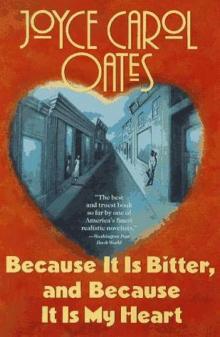 Because It Is Bitter, and Because It Is My Heart
Because It Is Bitter, and Because It Is My Heart Missing Mom: A Novel
Missing Mom: A Novel The Gravedigger's Daughter: A Novel
The Gravedigger's Daughter: A Novel American Appetites
American Appetites Black Dahlia White Rose: Stories
Black Dahlia White Rose: Stories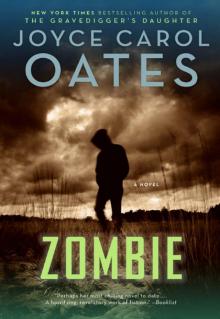 Zombie
Zombie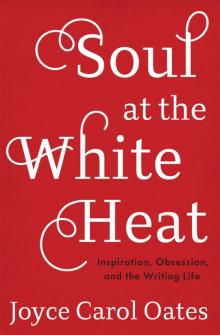 Soul at the White Heat: Inspiration, Obsession, and the Writing Life
Soul at the White Heat: Inspiration, Obsession, and the Writing Life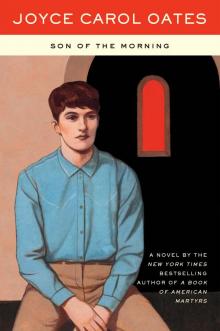 Son of the Morning
Son of the Morning Patricide
Patricide Snake Eyes
Snake Eyes Wonderland
Wonderland In Rough Country: Essays and Reviews
In Rough Country: Essays and Reviews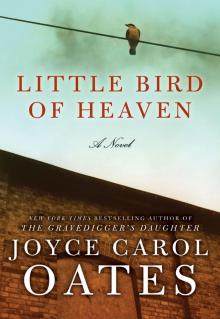 Little Bird of Heaven
Little Bird of Heaven The Haunting
The Haunting The Accursed
The Accursed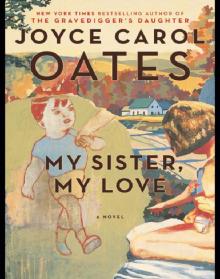 My Sister, My Love: The Intimate Story of Skyler Rampike
My Sister, My Love: The Intimate Story of Skyler Rampike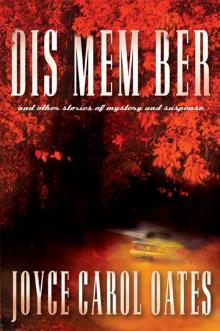 Dis Mem Ber and Other Stories of Mystery and Suspense
Dis Mem Ber and Other Stories of Mystery and Suspense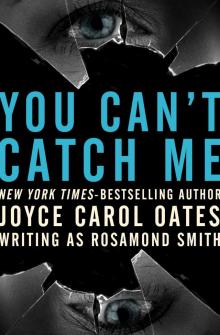 You Can't Catch Me
You Can't Catch Me Daddy Love: A Novel
Daddy Love: A Novel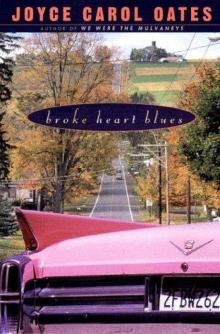 Broke Heart Blues
Broke Heart Blues I'll Take You There
I'll Take You There Mystery, Inc.
Mystery, Inc. We Were The Mulvaneys
We Were The Mulvaneys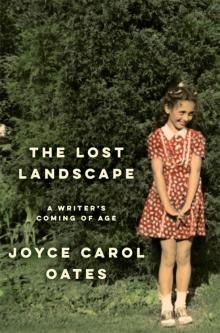 The Lost Landscape: A Writer's Coming of Age
The Lost Landscape: A Writer's Coming of Age Evil Eye: Four Novellas of Love Gone Wrong
Evil Eye: Four Novellas of Love Gone Wrong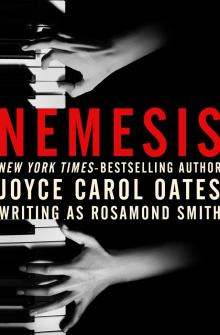 Nemesis
Nemesis Beautiful Days: Stories
Beautiful Days: Stories On Boxing
On Boxing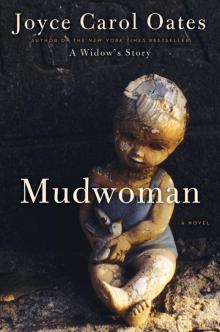 Mudwoman
Mudwoman Hazards of Time Travel
Hazards of Time Travel Night-Gaunts and Other Tales of Suspense
Night-Gaunts and Other Tales of Suspense Mysteries of Winterthurn
Mysteries of Winterthurn New Jersey Noir
New Jersey Noir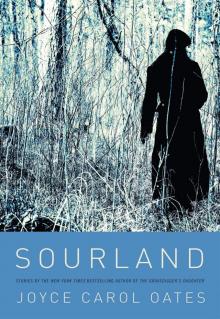 Sourland
Sourland Blonde
Blonde The Corn Maiden: And Other Nightmares
The Corn Maiden: And Other Nightmares The Oxford Book of American Short Stories
The Oxford Book of American Short Stories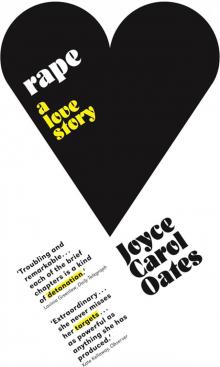 Rape: A Love Story
Rape: A Love Story Lovely, Dark, Deep: Stories
Lovely, Dark, Deep: Stories After the Wreck, I Picked Myself Up, Spread My Wings, and Flew Away
After the Wreck, I Picked Myself Up, Spread My Wings, and Flew Away Freaky Green Eyes
Freaky Green Eyes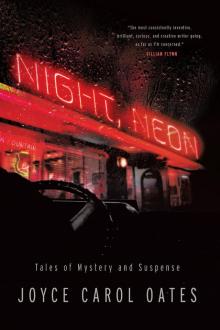 Night, Neon
Night, Neon I Am No One You Know: And Other Stories
I Am No One You Know: And Other Stories Black Water
Black Water Expensive People
Expensive People The Falls
The Falls Soul/Mate
Soul/Mate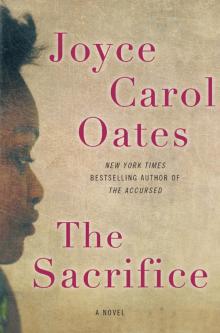 The Sacrifice
The Sacrifice The (Other) You
The (Other) You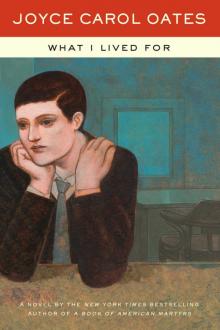 What I Lived For
What I Lived For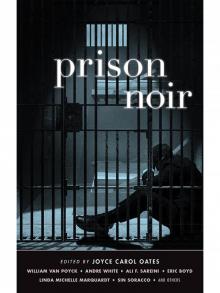 Prison Noir
Prison Noir High Crime Area: Tales of Darkness and Dread
High Crime Area: Tales of Darkness and Dread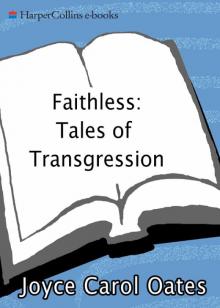 Faithless: Tales of Transgression
Faithless: Tales of Transgression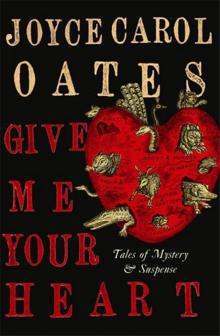 Give Me Your Heart: Tales of Mystery and Suspense
Give Me Your Heart: Tales of Mystery and Suspense The Rescuer
The Rescuer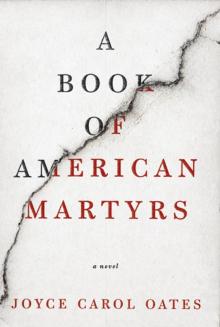 A Book of American Martyrs
A Book of American Martyrs American Melancholy
American Melancholy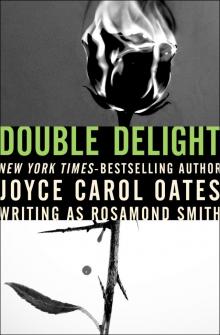 Double Delight
Double Delight Big Mouth Ugly Girl
Big Mouth Ugly Girl Bellefleur
Bellefleur Solstice
Solstice Big Mouth & Ugly Girl
Big Mouth & Ugly Girl Evil Eye
Evil Eye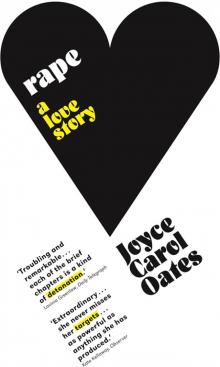 Rape
Rape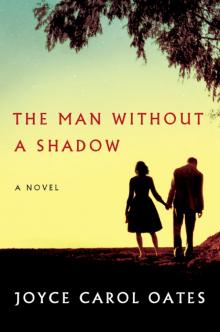 The Man Without a Shadow
The Man Without a Shadow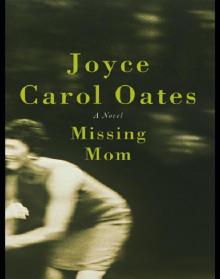 Missing Mom
Missing Mom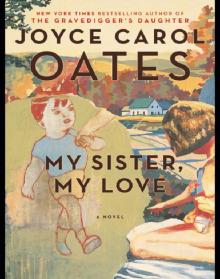 My Sister, My Love
My Sister, My Love The Gravedigger's Daughter
The Gravedigger's Daughter Beautiful Days
Beautiful Days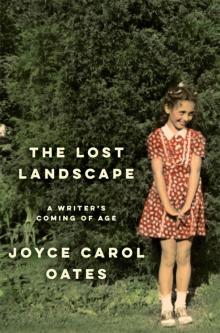 The Lost Landscape
The Lost Landscape Daddy Love
Daddy Love Dreams from the Witch House: Female Voices of Lovecraftian Horror
Dreams from the Witch House: Female Voices of Lovecraftian Horror The Tattooed Girl
The Tattooed Girl Give Me Your Heart
Give Me Your Heart In Rough Country
In Rough Country The Journal of Joyce Carol Oates
The Journal of Joyce Carol Oates Black Dahlia & White Rose: Stories
Black Dahlia & White Rose: Stories High Crime Area
High Crime Area Lovely, Dark, Deep
Lovely, Dark, Deep A Widow's Story
A Widow's Story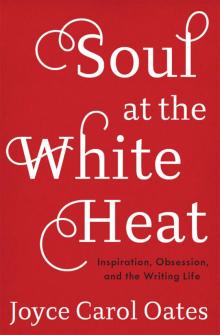 Soul at the White Heat
Soul at the White Heat Wild Nights!
Wild Nights!